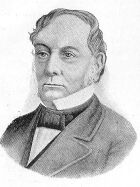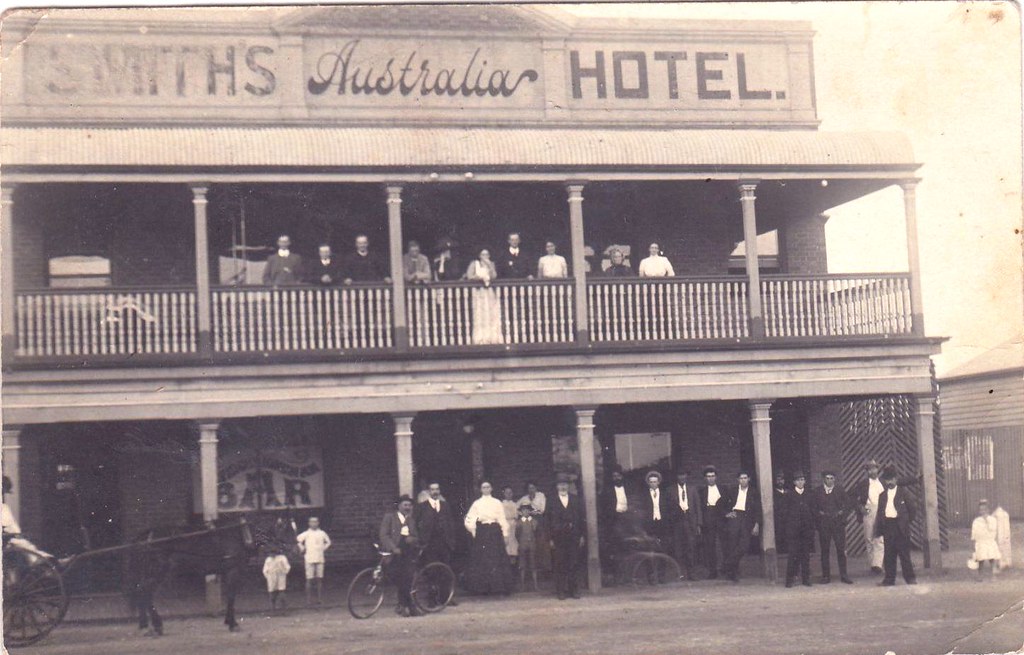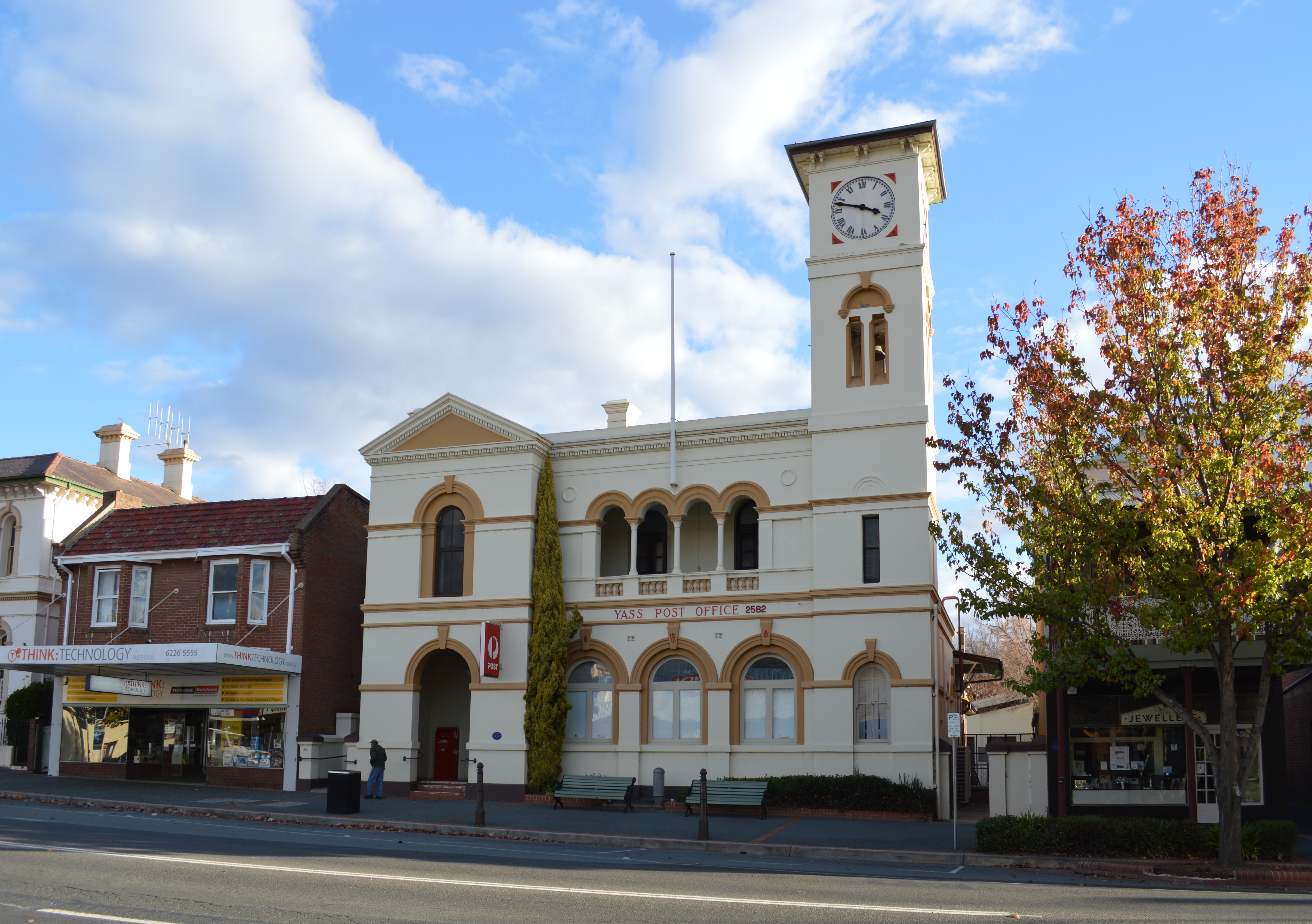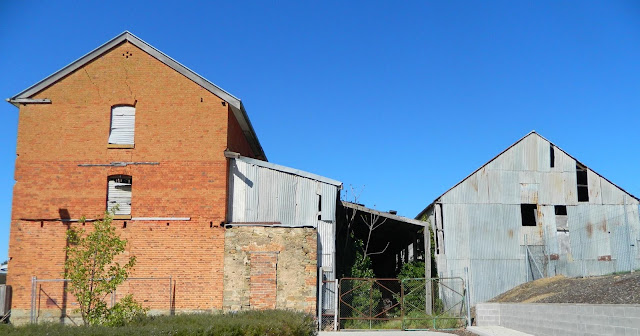 |
| Ngunnawal art, possibly an echidna |
Aboriginal people tried to continue living their traditional lifestyle but European settlement encroached on their camping and hunting lands.
By 1851 several Aboriginal reserves had
been established, but they were not used. In 1926, Hollywood Mission was established, and 117 people were living there in 1937 under unsatisfactory conditions, near the slaughter yard and the cemetery. Read more
here and
here
1800s:
At the time of Hume and Hovell’s 1824 expedition through the Yass area to find new grazing land for the colony, there were no other stations beyond Hume’s at Gunning.
In 1828 Hume accompanied Charles Sturt on another expedition, and they found the Darling River. By this time, Hume's health was broken, and as he had been granted 500 acres on the Yass
Plains by Governor Darling,
he settled at this property, "Cooma".
Hume was later buried at Yass Cemetery in 1873. Hamilton Hume's brother was shot and killed by the Whitton gang of bushrangers, at Yass, in 1840.
 |
Hamilton Hume 1797 – 1873. Hamilton Hume died at his home at Cooma Cottage on 19 April, 1873
|
Settlers and Convicts
By 1828, Mr and Mrs George Davis established "Gounyan" at Murrumbateman, a fertile 60-acre property with a frontage to the Murrumbateman Creek in the Yass
district. Mary Anne Davis (known as Granny Davis) of Gounyan also acted as a midwife to many women in the mid-nineteenth century.
Soon, many pastoral properties, many with convict assigned labour, were being established on the Yass Plains.
Henry O’Brien arrived at Yass in the 1820s and named his property "Mt Lavinia" after the Governor of Ceylon’s residence. Sometime between the late 1820s and 1840, Henry renamed his property "Douro", after the Battle of the Douro (1809). O'Brien was elected a member of the Yass District Council in 1844.
"Great numbers of cattle are browsing in these luxuriant pastures [of the Yass Plains], amounting on a moderate calculation to form 12,000 to 15,000 head... Their greatest enemies are the Blacks, who drive them into the swamps and then spear them."
In 1832 the English naturalist George Bennett
came to Yass and was told by the local Aboriginal people that platypus were "very good to eat". Bennett also wrote:
"The aborigines, among the tribes in this part of the colony, having found out that by killing the cattle of the settlers, they can procure a larger supply of food with less trouble than by hunting,...."  |
| George Bennett FRCS FLS FZS (31 January 1804 – 29 September 1893) was an English-born Australian physician and naturalist |
The Town Grows
In 1833, the first Catholic Mass in the Yass area was conducted by Rev. Fr John Joseph Therry a Gaelic speaker, who came from County Cork, Ireland. In 1835, the Catholic Bishop Polding arrived. A few years later, Polding laid the foundation stone of the first church and a street is named after him in the town.
The first Anglican services were held in the courthouse. But
when Bishop William Broughton came to the town in 1840, he arranged for a subscription library by the banks of the river to serve as the place of worship, for the Church of England, until St Clements was constructed in 1850.
John Hanley's Shamrock Inn was built in 1835. Mrs Reid opened a day and boarding school at Hanley's Inn about 1837.
In 1836, Major Thomas Mitchell passed through Yass and he saw the first buildings of the town, such as an inn near the riverbank and a bark hut which served as courthouse and gaol. In the following year, the town's first doctor and police magistrate arrived and
the construction of a brick courthouse began. The buildings were mostly concentrated around the Warrambalulah Street area.
Thomas Laidlaw was a Scottish banker who arrived in Australia in 1839. He arrived in Yass in 1840 and became a merchant and brewer in 1849 and the postmaster in 1851.
 |
| Earl pioneer's home in the Yass to Yarralumla Plains, NSW. Telegraph (Brisbane, Qld. : 1872 - 1947), Saturday 16 February 1924 |
Oldest Surviving Building
The Rose Inn located on Comur Street was constructed by Isaac Moses. He was granted a publican’s licence on February 10, 1846. This building is believed to be the oldest remaining building in Yass and the
second hotel to be built in the town. The building operated as a hotel until 1881 and then became a doctor’s surgery for many years.
Another old hotel at Yass is The Globe Inn. It was established in 1847.
 |
| The Globe Inn, 1936, Yass Courier, NSW |
1840s
By the 1840s, mail was passing daily through the town.
Hamilton Hume and John Watson established a steam flour mill by the Yass River in 1842. The mill was situated opposite the historic home, "Cliftonwood", which was built in 1841 by John Watson on land owned by Hamilton Hume.
By 1848, the population of Yass stood at 274. This did not include the local Aboriginal population whose hunter-gatherer lifestyle had been disrupted. Many Aboriginal people began to form small camps on the outskirts
of the town and on the stations of benevolent landowners. Between 1855 and 1955, Aboriginal reserves were established at Pudman and Blakney Creeks and later, two reserves at North Yass. Some Aboriginal people, however, like the Bell family, made an income from farming.
Medical Men
"The first medical man I know in Yass
was Dr. Cullan. He was a young gentlemanly
fellow, but my acquaintance with him was too
limited to enable me to say more; besides, I do
not know that he is history yet. Dr. James Ellis
was the next who commenced business in Yass.
The doctor was a naval officer of standing, a man
of undoubted ability, both as a professional man
and a scholar, and although possessed of a share
of the blunt roughness of the sailor, he under that
roughness carried a kind, feeling heart. On leaving
Yass, Dr. Ellis returned to his post, and was
appointed-inspector of naval hospitals in the South
American stations." Yass Courier (NSW : 1857 - 1929), Saturday 2 July 1864
The Commercial Hotel is one of only a few remaining original hotels in the Yass area. It has existed since at least 1849. (A suspicious fire destroyed the Commercial Hotel during extensive renovation on 21 May 2023)
1850s
In 1854, the town's first bridge was built, designed by Edmund Blacket.
EXECUTION OF MARY ANN
BROWNLOW. (1855)
The execution of this unfortunate young
woman, for the murder of her husband, George
Moore Brownlow, took place at four o'clock
on Thursday afternoon, on the scaffold erected
for the purpose within the precincts of the prison. Bell's Life in Sydney and Sporting Reviewer (NSW : 1845 - 1860)
In 1857, the newspaper
The Yass Courier began. It was originally published weekly by James John Brown & Charles William Morgan. In the same year of 1857, the telegraph network reached Yass, making
the widespread and immediate distribution of information possible within Australia and overseas.
In 1857 a town meeting was held and it was decided that a mechanics institute would be built at Yass, which would provide education for artisans, tradesmen and working men. A small building was erected on Rossi Street and later, a larger building
was constructed on Comur Street after a competition was held in 1868 to select a design.
1860s
 |
| Cooma Street, Yass, NSW, in 1860, Sydney Mail (NSW : 1912 - 1938), Wednesday 23 February 1921 |
Bushrangers
In 1864, Ben Hall's gang of bushrangers were active around the Yass area bailing up the Cobb and Co. Coach. In November of that year, a member of Hall's gang, John Gilbert, shot policeman, Sergeant Parry. Then Gilbert was shot by Constable John Bright in 1865 during a gunfight on the Borrowa Road, near Binalong. Gilbert is buried in the police paddock there.
The Fairy Hotel Inn was owned by German-born hotel owner licensee Christoph Alt. He married Martha Crossley in 1863, and they
bought land in Yass. The couple built the hotel on Fairy Hole Creek Road, called the Fairy Hole Creek Hotel (Fairy Hotel Inn), in June 1864.
Merino sheep and stud breeding provided the main economic backbone for Yass. "Ravensworth" stud was established in 1865, and became well known for its fine merino wool.
In the 1860s, during various periods, two day and boarding schools were operating, one called "The Willows" in Rossi Street, and another called "Creek Cottage" in Meehan Street. A Presbyterian school and a Church of England school in Church Street, as well as "Lawhaddon" elementary Grammar School in Dutton Street, were other schools.
In 1866 the Public Instruction Act was passed and a national school opened in 1865. By December, 26 boys and 27 girls were enrolled. However, Yass Public School did not open until 1879.
 |
| King "Audy"(?) of Yass, NSW, 1865-1868, SLVIC |
In 1868, the Yass Chorale and Dramatic Society held their first performance in the Royal Hotel.
1870s
The Town MovesIn the 1870s, there were about twenty-seven hotels and inns operating in the Yass area and many shops. As Yass was on the main thoroughfare of travel from Sydney to Melbourne and there were many outlying farms, the town provided
services and provisions for rural settlers and travellers.
 |
| Panorama of Yass, NSW, 1870-1875, SLNSW |
The town's original business district was relocated after the destructive flood of 1870, moving from an area near the Yass River to the higher ground of Comur, Dutton and Rossi Streets. Little remains of the original settlement around Warrambulah Street, much of which was washed away. However, the Rose Inn (21 Comur St) and Cobblestone Cottage (15 Comur Street) date from this period.
A.B. "Banjo" Paterson
arrived in the Yass district at the age of seven, in 1871. He lived in the region for many years.
Patrick Hartigan (aka John O'Brien) the poet and priest was born in 1878 at the Boree Log cottage (built 1876) in DeMestre Street, Yass. He was the author of the book of poems "Around the Boree Log" using the name of John O'Brien. He attended the Yass convent school as a child.
 |
| "Yass Bridge and township, NSW. circa 1876". Photo credit: Roads and Maritime Services |
In 1878 the foundation stone for the Yass Public School was laid down.
 |
| Panorama of Yass, NSW, circa 1870-1875 |
 |
| Yass, NSW. Shows viaduct going into centre of township, crossing dirt road in foreground, circa 1875. |
1880sIn April 1883, 16 Aboriginal children came to Yass Public School and were enrolled by James Brierly. Other parents at the school objected and threatened to withdraw their children. However, St Augustine Catholic boys' school accepted 18 Aboriginal students, who wished to attend school, from the various camps around Yass.
The post office in Yass was designed by the Colonial Architect’s Office in the Victorian Italianate style, reflecting the prosperity of the town. The post office opened in 1884 and iron hitching posts were added to the front in 1887. (s
ee here)
The clock located in the post office clocktower was built by Angelo Tornaghi who came to Australia from Italy in 1858 aged 24. For the next fifty years, Tornaghi was involved in Sydney’s scientific community and in 1864, he was running a business importing and making scientific instruments at 312 George Street, Sydney.
 |
Angelo Tornaghi was born Milan in 1831 and arrived in Sydney in 1858 to supervise the adjustment of the Negretti & Zambra instruments ordered by Sydney Observatory. The Yass Post Office clock was also built by Angelo Tornaghi
L'Italo-Australiano = The Italo-Australian (Sydney, NSW : 1905 - 1909), Saturday 20 October 1906 |
The Yass Courthouse built in 1887 in Victorian Italianate style, designed by Colonial Architect James Barnet, has two courtrooms, offices, a grand foyer, and an old morgue. There are also underground tunnels leading from the dock in the central courtroom, from the days when bushrangers roamed
the district. This building replaced a 1847 courthouse.
Another ship’s doctor who also hailed from London was Dr Philip Thornton Thane, who moved to Yass in 1884. He wrote a book called "The Reminiscences of an Australian Country Doctor". He was also an alderman, mayor, coroner and Justice of the Peace.
1890s
In 1892 Yass was connected to the New South Wales Government Railways' Main Southern railway line. A tram was built to connect Yass Junction on the main railway line and Yass Town.
 |
| 1. Mechanics Institite, Yass, NSW. 2. Ysss Courthouse, NSW. Australasian (Melbourne, Vic. : 1864 - 1946), Saturday 22 February 1896 |
 |
| 1. Bird's eye view of Yass, NSW. 2. Bridge over Yass River, NSW. Australasian (Melbourne, Vic. : 1864 - 1946), Saturday 22 February 1896 |
 |
| The Yass District Hospital, NSW. Australian Town and Country Journal (Sydney, NSW : 1870 - 1919), Saturday 20 August 1898 |
 |
| Laying the foundation stone of the new wing to the Yass Hospital, NSW, Australian Town and Country Journal (Sydney, NSW : 1870 - 1919), Saturday 20 August 1898 |
1900s
 |
| In 1875, a small group of Irish Sisters came to Yass, NSW, and as their mission founded Mt Carmel School, Freeman's Journal (Sydney, NSW : 1850 - 1932), Saturday 12 May 1900 |
 |
| Mrs. Coen's Stores, Yass, NSW. Freeman's Journal (Sydney, NSW : 1850 - 1932), Saturday 12 May 1900 |
 |
| R S Duddlestone's Royal Hotel, Yass, NSW. Freeman's Journal (Sydney, NSW : 1850 - 1932), Saturday 12 May 1900 |
 |
| Williamson's "Times" Bakery and Cordial Factory, Yass, NSW. Freeman's Journal (Sydney, NSW : 1850 - 1932), Saturday 12 May 1900 |
 |
| J F Cripps's Commercial Hotel, Yass, NSW. Freeman's Journal (Sydney, NSW : 1850 - 1932), Saturday 12 May 1900 |
 |
| Yass Post and Telegraph Office, NSW. Australian Town and Country Journal (Sydney, NSW : 1870 - 1919), Saturday 1 December 1900 |
 |
| Yass Courthouse, NSW, Australian Town and Country Journal (Sydney, NSW : 1870 - 1919), Saturday 1 December 1900 |
 |
| Yass Public School, NSW. Australian Town and Country Journal (Sydney, NSW : 1870 - 1919), Saturday 1 December 1900 |
 |
| Mr Barber's Produce Stores, Yass, NSW. Australian Town and Country Journal (Sydney, NSW : 1870 - 1919), Saturday 1 December 1900 |
 |
| Mr C B Payne's Cheap Cash Stores, NSW. Australian Town and Country Journal (Sydney, NSW : 1870 - 1919), Saturday 1 December 1900 |
Yass was one of the sites proposed for the Federal Capital after 1901. Yass is the closest city to the chosen capital, Canberra.
In 1903 Sir Walter Merriman established "Merryville", one of Australia's most famous sheep studs.
 |
| 1. Yass federal City Executive League NSW. 2. Yass Courthouse, NSW. Y Sydney Mail and New South Wales Advertiser (NSW : 1871 - 1912), Wednesday 14 October 1908 |
 |
| J.E. Morgan, Storekeeper of Rye Park, Yass, N.S.W. - early 1900s, Aussie~mobs |
 |
| "Yass, N.S.W. - circa 1905" by Aussie~mobs is licensed under CC PDM 1.0 |
 |
| Rossi Street, Yass, N.S.W. - circa 1908, Aussie~mobs |
 |
| Members of the Kilties band lined up on a station platform at Yass Junction, New South Wales, Australia. 1908, Community Archives |
 |
| American boys visit to Yass, N.S.W. - 16 July 1909, Aussie~mobs |
 |
| Smith's Australia Hotel, Yass, NSW, circa 1910 |
 |
| Queen Lucy and her daughter, and some of her grandchildren, Aboriginal people from Daily Telegraph Yass, NSW, (Sydney, NSW : 1883 - 1930), Tuesday 2 August 1910 |
 |
| Queen Lucy and King Ned from North Yass, (Aboriginal couple from Yass), NSW, Daily Telegraph (Sydney, NSW : 1883 - 1930), Tuesday 2 August 1910 |
 |
Shiel grandparents with granddaughter, horsedrawn sulky at "Thornton" - Yass, NSW, circa. 1917.
State Library of New South Wales |
WWI
 |
| Private V E S Davis, 2523, 55th Battalion. born at Violet Cottage - Gounyan Yass. He died of wounds received in the Third Ypres offensive, September 28th, 1917. |
1920s
 |
| DESCENDANTS OF THE DISCOVERERS OF YASS. Left to Right : Bruce Hume (grand-nephew of Hamilton Hume). Fred Barber (grandson of Geo. Barber), and J. W. Broughton (grandson of H. W. Broughton).Sydney Mail (NSW : 1912 - 1938), Wednesday 9 March 1921 |
 |
| Cooma Cottage, Yass, NSW. Home of Hamilto Hume. Sydney Mail (NSW : 1912 - 1938), Wednesday 23 February 1921 |
 |
| Yass memorial Hall, NSW. Daily Telegraph (Sydney, NSW : 1883 - 1930), Tuesday 6 March 1923 |
 |
| St Clement's, Yass, NSW. Land (Sydney, NSW : 1911 - 1954), Friday 26 September 1924 |
In 1927 the original gas street lamps in Comur Street were replaced with electric lights. Reproduction "heritage style" street lamps replaced these in 1994.
 |
| An old dray with double windlass over a mine shaft at Yass, NSW, 1927 |
1930s
 |
| At the Yass Picnic Races, NSW. Sydney Mail (NSW : 1912 - 1938), Wednesday 2 April 1930 |
 |
| Yass races, NSW, circa 1930s, Sam Hood. State Library of NSW |
 |
| The Duke of Gloucester at Yass Junction, NSW. Sydney Mail (NSW : 1912 - 1938), Wednesday 31 October 1934 |
 |
| Champion Merino rams, Yass Show, NSW, Land (Sydney, NSW : 1911 - 1954), Friday 15 March 1935 |
 |
| Yass, NSW, circa 1936, showing the Commercial Hotel |
 |
| Yass races, NSW, March 1936 / Sam Hood, State Library of New South Wales |
 |
| Former Yass Methodist Church, NSW, foundation stone laid 1871, Methodist (Sydney, NSW : 1892 - 1954), Saturday 9 January 1937 |
 |
| Vale View, Yass, NSW. Since 1850 has operated as a grazing enterprise. Weekly Times (Melbourne, Vic. : 1869 - 1954), Saturday 5 August 1939 |
 |
| Cooma Street, Yass, NSW, Weekly Times (Melbourne, Vic. : 1869 - 1954), Saturday 5 August 1939 |
The Liberty Theatre was designed by Guy Crick and Bruce Furse in 1939. The building and design were very advanced for the time, with heating and cooling.
 |
| The Liberty Theatre, Yass, NSW. Yass Tribune-Courier (NSW : 1929 - 1954), Thursday 5 October 1939 |
 |
Isaacs Grovcnor, who. at the age of 66, has been promoted to the rank of first-class police tracker. He was a native of Yass and became a tracker in July, 1897, Forbes Advocate (NSW : 1911 - 1954), Tuesday 4 July 1939 |
1940s and WWI |
| Yass Tribune-Courier (NSW : 1929 - 1954), Monday 18 March 1940 |
 |
| Class Z1310 (CC) locomotive at Yass Junction, NSW, 1941, NSW State Archives |

 |
So hungry were Australian Army nurses imprisoned at Totsuka, Japan, that at times they ate the glue from envelopes they were given to make. Captain Kathleen Parker, former matron of Yass District Hospital, said this on her return to Sydney recently after three and a half years in Japanese prison camps. Farmer and Settler (Sydney, NSW : 1906 - 1955), Friday 5 October 1945 |
 |
| "Hollywood", Yass, NSW, All Blacks Rugby League Team 1948 (l - r)Rear: Abe Russell, Ron Walker, Douglas Williams, Alex Bell, Stan Russell, Jack Carrol. Middle: Norman Connors, Harry Williams, Peter Bulger, Vincent Bulger Front: Eric Bell, George Williams, Don Bell, Ferdie Bell |
 |
| 27. Hume Bridge, Yass, NSW, circa 1948 |
1950sIn 1956, Yass was the first town in New South Wales to have the water supply fluorinated.
1980s
The Yass Town branch tramway was formally closed in 1988.
1990s
The Hume Highway bypass of Yass was built in the early 1990s.
Around Yass
 |
| Yass, NSW |
 |
| The Commercial Hotel, Yass, NSW, was established in 1840. The Hotel closed in 2006 and is in a sad state of repair |
 |
| The Commercial Hotel, Yass, NSW, was established in 1840. The Hotel closed in 2006 and is in a sad state of repair |
 |
| The "Rose Inn" is the oldest home in Yass, circa 1837 |
 |
Cliftonwood is one of the oldest properties in Yass, NSW, built by the Watson family in 1841
|
 |
| Dr James Ellis, a naval surgeon, was the Police Surgeon at Yass from 1839-1843 (see here). He owned a small stone residence and surgery on the corner of Dutton and Rossi streets named "Crona". Also at 11 to 15 Rossi Street are homes with stables built in the 1880s, which belonged to the mounted police.Dr Ellis' house, Crona, Rossi Street (Google) |
 |
| The Mechanics' Institute, built 1869. Comur Street Yass, NSw |
 |
| Hamilton Hume's grave at Yass Cemetery, NSW |
 |
| Liberty Theatre at Yass, 1939, NSW |
 |
Corona, Mount St Yass, NSW
|
 |
| The oldest surviving building in Yass. Built in 1837 as the Rose Inn |
 |
| National Australia Bank, Yass, circa 1872 |
 |
| The Commercial (now Bowning) Hotel, Yass, NSW, was built in 1860 |
 |
| Cooma Cottage, Home of Hamilton Hume, Yass, NSW, built from 1830 to 1837 |
 |
| Cliftonwood was built circa 1841 by John Watson on land owned by Hamilton Hume, Yass, NSW |
 |
| This courthouse in Yass, NSW, bulit in the Roman Doric style, opened in 1880. Three magistrates were appointed to the Yass Bench in 1834. The first Courthouse opened in Yass in 1835, in a slab and bark hut. There were very harsh penalties at the time. A drunk convict could get 50 lashes; a free settler, a five shilling fine. (see here) |
 |
| Old Linton was first built in 1857 as a family home for Moses Moses was who sentenced to life transportation for stealing a pocket book containing £7. He arrived in Sydney in 1815 aboard the Marquis of Wellington. Moses achieved notoriety in 1842 after single-handedly catching the bushranger Massey in the dinging-room of his hotel at Yass, NSW. |
.jpg) |
| The Oddfellows’ Hall was built in 1887 by the "Royal Order of Oddfellows", more commonly known in Australia as Manchester Unity, Yass, NSW |
 |
| The globe in Yass, NSW, built circa 1847 |
 |
| Yass Public School, NSW, circa 1877, a Gothic revival style of architecture |
 |
| In 1875, a small group of Irish Sisters came to Yass, NSW, and as their mission founded Mt Carmel School |
 |
| Yass Post Office, NSW, built 1884 - 1888 |
 |
| A old-style lamp on the footpath on Comur Street, the main street of Yass, NSW |
 |
| Cobblestone Cottage (c.1836) in Yass, NSW, originally a store, it also served as a post office |
 |
| St Clement’s Anglican Church Designed by colonial architect Edmund Blacket, circa 1850, Yass, NSW |
 |
| Yass Pharmacy, NSW, circa 1865 |


























































.jpg)



























